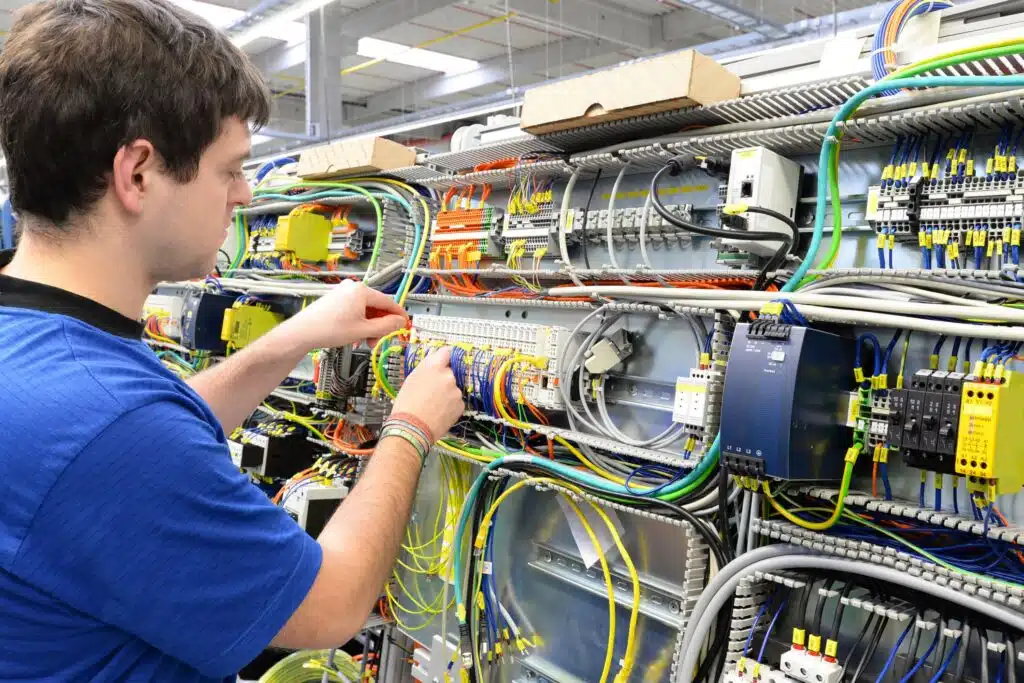A wiring harness is also called a cable harness, wire harness, cable assembly, wiring assembly, and wiring loom. What does it consist of? A wiring harness is an assembly of electric wires or cables that are responsible for the transmission of electric power.
The electric wires or cables are bound together with the help of durable materials like zip ties , Vinyl, rubber, electric tape, string, or a combination of any of these.
Wiring harnesses can be likened to a nerve system. Through this system, power and information are transmitted- similar to the circulatory and nervous systems of the human body. Wiring harnesses handle voltages, and in certain instances, digital information as well.
Why is having a wiring harness in good condition essential? You can think of a garden hose. What happens when you pinch it? It restricts flow and shows resistance. Similarly, a poor functioning wiring harness will restrict the flow of power and will show resistance. This can lead to potential electrical risks and malfunctions.
The Wire Assemblies In Wire Harnesses
A lot of people confuse wire harnesses with cable assemblies. Both are integral parts of the electrical systems in today’s electronic-driven world. However, cables and wires are different in a lot of ways. How?
A wire is a strand of conductors like copper or aluminium. A cable, on the other hand, is a collection of insulated wires- those that have been twisted and have a protective outer layer.
What is the purpose of using a wiring harness? It’s responsible for combining a group of connections, wires, or terminations into a well-coordinated functioning electrical system. It’s an essential part of the power network.
Uses and Industrial Applications of Wiring Harnesses
Following are the most common industries that use wiring harnesses extensively;
- Industrial Control Panels
- Data Centers
- Bit Coin Mining Data Centers
- Medical Industry
- Telecommunications sector
- Military Units
- Various other ancillary industries and units
The Design and Production of A Wire Harness
Depending upon the geometric and architecture of the electrical equipment, a wire harness is designed accordingly. The electrical requirements of the equipment will also be considered while trying to design the wiring harness. After the initial design is made, a schematic is utilized to create the paperwork for manufacturing. The assembly board is also created at this stage. The Assembly Board is also called a pinboard and shows all the component of the harness and their respective locations. It is also called a workbench for harness production.
Manufacturing Process Of Wiring Harnesses
Often, wiring harnesses are manually manufactured through automation methods. Since a lot of procedures are involved in the process, manual methods are preferred. The following are the different manufacturing processes:
- Routing of the wires through protective sleeves
- The branchlets from the wire strands are bound together often with the help of fabric tape
- Crimping of the terminals onto the wires.
- Insertion of one sleeve onto the other
- Using tape, clamps, and cable ties to fasten the wire strands
Since such complex processes cannot be automated, a lot of manufacturers prefer manual production. Also, manual production remains the most cost-effective technique- especially when small batches are involved.
Spike Electric and Wiring Harnesses
Spike Electric has received the UL764 approval for Wiring Harnesses. As a reliable manufacturer of electrical equipment and connection technology, Spike Electric provides services and pieces of equipment that have been extensively tested so that they can be used internationally. The Underwriter Laboratories (UL) has certified us as a manufacturer of Wiring Harnesses. So, if you are an industrial unit that wants to avail of our wiring harness products and services, get in touch with us. The team of professionals at Spike Electric will be ready to help.
Written by: Cole Attaway
Cole Attaway is the founder and CEO of Spike Electric Controls. Spike's mission is to improve the accessibility and delivery of industrial electrical gear for clients nationwide. Spike solutions result in reduced unplanned downtime, less overtime, and greater operational efficiencies.



